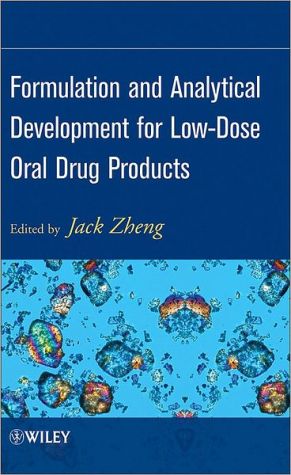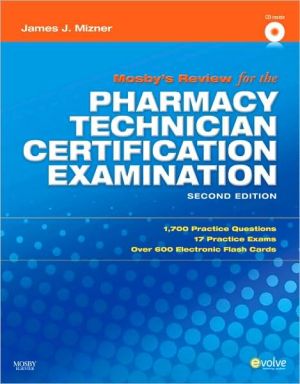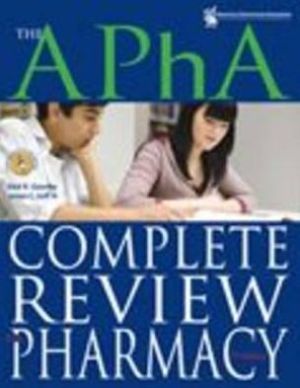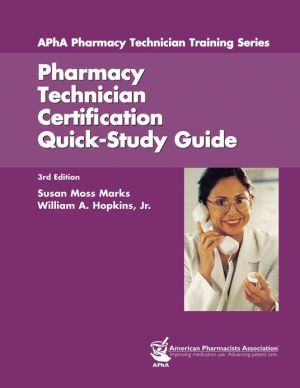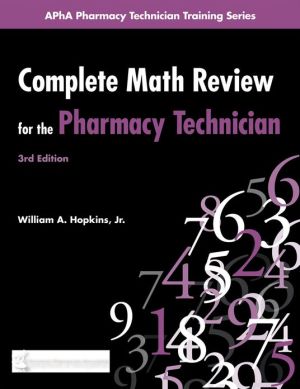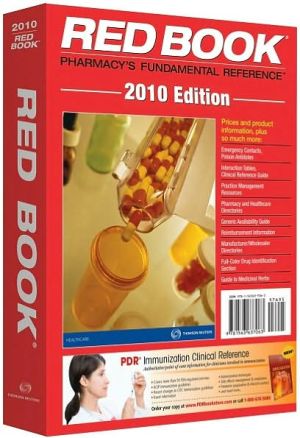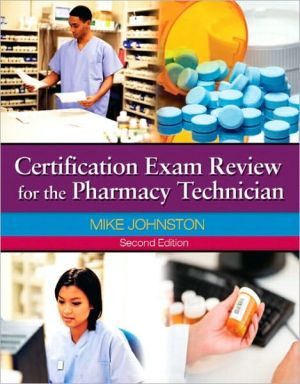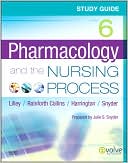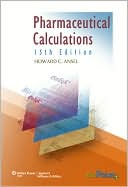Formulation and Analytical Development for Low-Dose Oral Drug Products
Developing and commercializing a low-dose oral drug product presents a number of hurdles that can quickly offset the drug's benefits. Written by a team of leading scientists in drug development, this book collects and synthesizes the knowledge, techniques, and strategies needed for developing low-dose drugs successfully. With this book's practical support, readers can overcome the hurdles at all stages in drug development, from formulation to manufacturing and control to regulatory compliance.
Search in google:
Tested-and-proven strategies for developing and manufacturing low-dose oral drug products Developing and commercializing a low-dose oral drug product presents a number of hurdles that can quickly offset the drug's benefits. Written by a team of leading scientists in drug development, this book collects and synthesizes the knowledge, techniques, and strategies needed for developing low-dose drugs successfully. With this book's practical support, readers can overcome the hurdles at all stages in drug development, from formulation to manufacturing and control to regulatory compliance. Following an overview of the drug discovery and development process, the book is divided into four parts: Part One examines formulation and process development of low-dose drugs, including theoretical considerations concerning the particle size of the drug substance and content uniformity, micronization of the drug substance, and manufacturing platform technologies. Part Two focuses on challenges in analytical method development, including analytical control strategy, physical characterization of the micronized powder and the solid state of the active pharmaceutical ingredient in dosage forms, and cleaning verification of manufacturing equipment. Part Three investigates containment technologies used in analytical laboratories and manufacturing plants. Part Four deals with important regulatory considerations. Readers learn how a variety of analytical methodologies are used in low-dose drug development, including dissolution testing, NMR, HPLC, and X-ray diffraction. Moreover, the book explains several possible manufacturing techniques, such as wet granulation, roller compaction, and direct compression alongside containment technologies for highly potent drugs. Case studies throughout the book demonstrate how particular strategies and techniques are applied in practice. Pharmaceutical scientists as well as students will find overcoming the obstacles in developing low-dose drug products much easier when they have this book on hand to consult at all stages in the drug development and manufacturing process. Doody Review Services Reviewer:Joseph Boullata, PharmD(University of Pennsylvania College of Nursing)Description:This welcome addition to books on dosage formulations has as its focus the challenging issue of developing and bringing to market oral drug products containing a low dose (< 1 mg) of active ingredient. These include widely used products such as oral contraceptives and thyroid hormone replacement. Purpose:The objective is to provide a concise review of the development of low-dose drug products from pharmaceutical, analytical, and regulatory perspectives. Audience:This book is written primarily for formulation scientists, analytical scientists, and regulatory specialists who will deal with low-dose oral drug products in industry or academia, as well as graduate students and postdoctoral fellows preparing for the field. Features:Following an excellent overview chapter by the editor, the book is divided into four sections. The first section on formulation development provides detailed information on strategies dealing with particle size and process methods issues. The second section discusses analytical methods for low dose products given the challenges of such low quantities of active ingredient. The third section has two chapters on technology for containment related to the potency of the active ingredient. The last section includes a final chapter on regulatory considerations. Among the book's outstanding features are 97 tables, 74 figures, some color plates, and dozens of equations. Numerous formulation case studies are provided. The referencing format is not consistent across the chapters, but the 7-page index appears to be adequate. The contributors come predominantly from industry, and it is unfortunate not to have more from academia and regulatory bodies. Assessment:This book is unique in its depth of coverage of the topic.
Preface xvForeword xixContributors xxi1 An Overview Jack Y. Zheng 11.1 The Drug Discovery and Development Process 21.2 Challenges and Strategies in Development of Low-Dose Drug Products 101.3 Summary 20Acknowledgments 20References 20I Challenges and Strategies in Formulation Development of Oral Low-Dose Drug Products 232 Challenges and Strategies in Formulation Development of Oral Solid Low-Dose Drug Products Jack Y. Zheng 252.1 Introduction 252.2 Current Regulatory Environment and its Impact on New Drug Product Development 282.3 Challenges in Developing Low-Dose Formulations 312.4 Manufacturing Platforms for Low-Dose Drug Products 382.5 Use of Experimental Design in Formulation and Process Development 422.6 Containments 442.7 Summary 45Acknowledgments 46References 463 Particle Size of Drug Substance and Product Content Uniformity - Theoretical Considerations Kevin C. Johnson 493.1 Introduction 493.2 Concept of Ideal Mixing 503.3 Ideal Mixing Model Comparison with the Yalkowsky and Bolton Approach 563.4 Experimental Support of Model Assumptions 593.5 Analytical and Practical Considerations 61References 624 Development of Low-Dose Formulations Using Fluidized Bed Granulation J. Joe Zhou Ralph Lipp 634.1 Introduction 634.2 Granulation Fundamentals 664.3 Theory of Fluidization 684.4 Formulation Development 724.5 Process Development 774.6 Summary 86References 865 Development of Low-Dose Solid Oral Formulations Using Wet Granulation Ahmad Almaya 895.1 Introduction 895.2 Granulation Mechanisms 915.3 General Considerations on Wet Granulation 935.4 Advantages and Disadvantages ofWet Granulation 1005.5 Use of Wet Granulation for Low-Dose Formulations 1015.6 Process-Induced Form Changes in Wet Granulation 1095.7 Concluding Remarks 111References 1126 Challenges in Development and Scale-Up of Low-Dose Drug Products by Dry Granulation: A Case Study Mary T. Am Ende Daniel O. Blackwood Daniel S. Gierer Christopher P. Neu 1176.1 Introduction 1176.2 Dry Granulation Process-Pros and Cons 1186.3 Overview of Dry Granulation Processes and Equipment Design 1196.4 Challenges for Low-Dose Product Development and their Assessment Methods 1256.5 Case Study: Formulation Challenges for Low-Dose Products 1286.6 Process Challenges During Dry Granulation Optimization for Low-Dose Products 1406.7 Conclusions 154Acknowledgments 155References 1557 Development of Low-Dose Solid Oral Tablets Using Direct Compression Jack Y. Zheng Robert L. Ternik 1597.1 Introduction 1597.2 Advantages of Direct Compression 1607.3 Challenges in Low-Dose Tablet Development Using Direct Compression 1627.4 Formulation Development for Low-Dose Drug Products Using Direct Compression 1697.5 Manufacturing Process Development for Low-Dose Drug Products 1877.6 Scale-Up for Blending Operation 1967.7 Formulation Examples for Direct Compression 1977.8 Conclusions 199Acknowledgments 199References 2008 Reduction of Particle Size of Drug Substance for Low-Dose Drug Products Christopher L. Burcham Paul C. Collins Daniel J. Jarmer Kevin D. Seibert 2058.1 Introduction 2058.2 Reduction of Particle Size of Drug Substance by Milling Technologies 2078.3 Reduction of Particle Size of Drug Substance Using Crystallization Technologies 2168.4 Scale-Up Considerations 2188.5 Emerging Technologies and Future Directions 219Acknowledgments 219References 2199 Function, Quality, and Regulations of Pharmaceutical Excipients for Oral Solid Dosage Forms Jack Y. Zheng 2239.1 Introduction 2239.2 Classification of Pharmaceutical Excipients in Solid Dosage Forms 2249.3 Physicochemical Attributes of Pharmaceutical Excipients 2259.4 Regulatory Status and Excipient Quality 2289.5 Summary 235Acknowledgments 235References 236II Challenges in Analytical Method Development for Oral Low-Dose Drug Products 23910 Analytical Method Development: Challenges and Solutions for Low-Dose Oral Dosage Forms Beverly Nickerson Reena M. Joseph Charles Palmer Alex M. Opio George H. Beresford 24110.1 Introduction 24110.2 Case Study 1: Drug Adsorption to Surfaces 24210.3 Case Study 2: Challenges Due to Nondrug-Related Impurities 24510.4 Case Study 3: HPLC Purity Method Development Challenges for a Fixed Combination Product Containing a Low-Dose Active Ingredient and a High-Dose Active Ingredient 25010.5 Case Study 4: Small Volume Dissolution Testing 25510.6 Summary 261Acknowledgments 261References 26111 In Vitro Dissolution Testing and Method Development Vivian A. Gray Jack Y. Zheng Norman N. Sesi 26511.1 Introduction 26511.2 Overview of Dissolution Testing 26511.3 Dissolution Method Development 27111.4 Dissolution Method Development for Low-Dose Oral Drug Products 27511.5 Summary 279References 28012 Analysis of Physical Transformation of Api During Manufacture and Storage Gregory A. Stephenson 28312.1 1Introduction 28312.2 1Discussion of Solid-State Forms 28412.3 1Monitoring Processing Steps 28512.4 1Measuring Transitions and Solid-Form Transformations in the Low-Dose Tablet 28712.5 1Common Methods Used for Examination of Solid Forms 28912.6 1Conclusions 305References 30613 Physical Characterization Tests for Drug Substances Used in Low-Dose Formulations Ronald G. Iacocca 30913.1 1General Issues in the Physical Characterization of Micronized Powders Used in Low-Dose Formulations 30913.2 1Particle Size Analysis 30913.3 1Specific Surface Area Analysis 32013.4 1Summary 323References 32314 An Excipient Library Approach to Analytical Development for Low-Dose, Solid Oral Dosage form Drug Products Qing Chang Lisheng Kang Keri Varner Joyce Bridges Norman Sesi Margo Palmieri 32714.1 Introduction 32714.2 Importance of Excipient Absorbance Background to Low-Dose Impurity Analysis 32814.3 Factors Affecting Excipient Absorbance Background 33214.4 Use of Excipient Library 33914.5 Conclusions 341Acknowledgments 341References 34215 Cleaning Verification for Highly Potent Compounds Brian W. Pack 34515.1 Introduction 34515.2 Cleaning Validation vs Cleaning Verification 34615.3 Acceptance Limit Calculations 34715.4 Analytical Method Validation 35215.5 General Analytical Techniques 36115.6 Analytical Techniques for Low-Dose Compounds 36415.7 Conclusions 376Acknowledgments 377References 377III Containment Techniques for Highly Potent Pharmaceutical Compounds 38116 Containment Challenges and Strategies for Potent Compounds in the Pharmaceutical Industry Victoria Cathcart Sarah Jones Beverly Nickerson 38316.1 Introduction 38316.2 Safe Exposure Control Levels-Bands, Limits, and Handling Guidance 38416.3 The Hierarchy of Workplace Controls 38916.4 Case Studies 39716.5 Summary 403Acknowledgments 403References 40317 Sample Handling and Containment in Analytical Testing Laboratories David S. Pattavina Nancy Sage Beverly Nickerson 40517.1 Introduction 40517.2 Sample Handling Considerations 40617.3 Handling Potent Compounds in Standard Analytical Laboratories 40717.4 Handling Potent Compounds in a Containment Laboratory 41117.5 Additional Considerations for Handling Potent Materials 42617.6 Summary 427Acknowledgments 428References 428IV Regulatory Considerations in the Development of Low-Dose Drug Products 42918 Regulatory Considerations in the Development of Low-Dose Solid Oral Drug Products Ravi S. Harapanhalli 43118.1 Introduction and Overview 43118.2 Three-Pronged Approach to Low-Dose Formulations 43318.3 Pharmaceutical Development Report 43418.4 Facility Cosntrols for Highly Potent Drugs 45118.5 Conclusion 452References 453Index 455
\ From The CriticsReviewer: Joseph Boullata, PharmD(University of Pennsylvania College of Nursing)\ Description: This welcome addition to books on dosage formulations has as its focus the challenging issue of developing and bringing to market oral drug products containing a low dose (< 1 mg) of active ingredient. These include widely used products such as oral contraceptives and thyroid hormone replacement. \ Purpose: The objective is to provide a concise review of the development of low-dose drug products from pharmaceutical, analytical, and regulatory perspectives. \ Audience: This book is written primarily for formulation scientists, analytical scientists, and regulatory specialists who will deal with low-dose oral drug products in industry or academia, as well as graduate students and postdoctoral fellows preparing for the field. \ Features: Following an excellent overview chapter by the editor, the book is divided into four sections. The first section on formulation development provides detailed information on strategies dealing with particle size and process methods issues. The second section discusses analytical methods for low dose products given the challenges of such low quantities of active ingredient. The third section has two chapters on technology for containment related to the potency of the active ingredient. The last section includes a final chapter on regulatory considerations. Among the book's outstanding features are 97 tables, 74 figures, some color plates, and dozens of equations. Numerous formulation case studies are provided. The referencing format is not consistent across the chapters, but the 7-page index appears to be adequate. The contributors come predominantly from industry, and it is unfortunate not to have more from academia and regulatory bodies. \ Assessment: This book is unique in its depth of coverage of the topic.\ \
